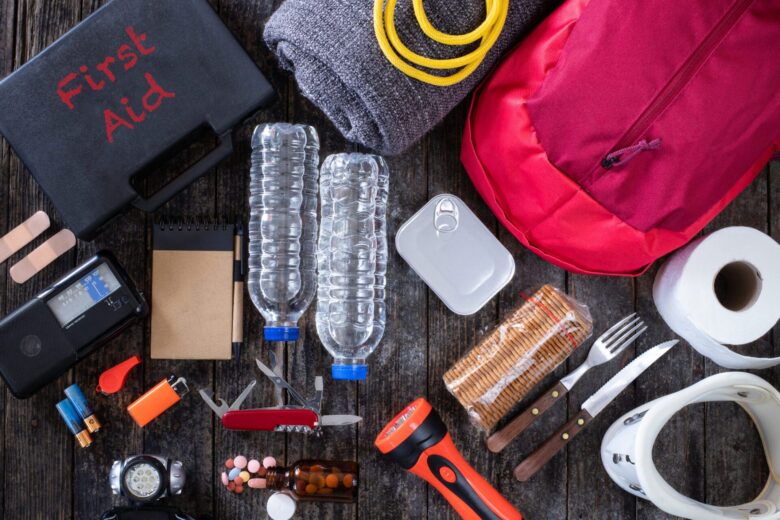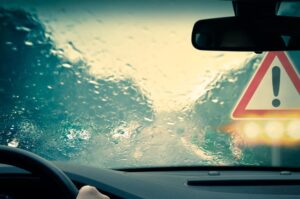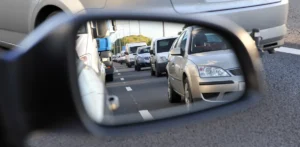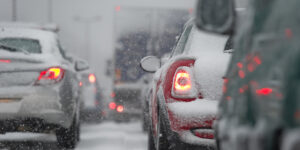Every driver knows how important it is to be prepared for any situation that may arise on the road. A car emergency kit is an important part of the plan because it contains all the tools and supplies you will need in the event of a flat tire, breakdown, or even a minor accident. Whether you’re taking a long road trip or just heading to work, having a well-stocked emergency kit can go a long way toward improving your safety and peace of mind. If you want to be prepared for a roadside emergency, this article discusses the items you should always have in your car emergency kit.
1. Simple Equipment and Tools
First and foremost, your car emergency kit should be equipped with basic tools and equipment that can help you solve typical car problems. A reliable tool kit should be a multi-tool, such as pliers, a knife, and a screwdriver in one. You’ll also need a wrench, pliers, and a set of straight and Phillips screwdrivers. You can use these tools to troubleshoot minor problems and make adjustments to get your car back on the road or running until professional help arrives.
Another important part is a tire repair kit. The kit should include tire sealant, a tire pressure tester, and a portable air compressor. These things can help you temporarily fix a flat tire so you can get to the next gas station. It is also important to have an extra tire and make sure it is in good condition and properly inflated.
2. Safety Items
In every roadside situation, safety must come first. To ensure that other vehicles can see you, especially at night or in bad weather, you will need a reflective warning triangle and a safety vest. Placing a bright triangle behind your car can help other drivers see you and reduce the chance of an accident while your car is being serviced.
If an emergency arises, you’ll want to have a first aid kit on hand. Bandages, gauze, antiseptic wipes, tape, scissors, tweezers, and painkillers should all be in your kit. It’s also a good idea to bring something like a thermal blanket as this can help prevent frostbite in cold weather. Knowing how to use the items in your first aid kit is just as important as having them. You may want to take a basic first aid course.
3. Supplies for Staying Warm and Nourished
If you are lost for an extended period, it is important to have something to keep you warm and eat. To stay warm in the winter, put a blanket or two in your car. In winter, you may want to bring a thicker thermal blanket or a sleeping bag designed for cold weather. Food and bottled water that doesn’t spoil quickly should also be in your emergency kit. Energy bars, granola bars, nuts, and dried fruit are all good choices because they are small, healthy, and have a long shelf life. You should have enough food and water for at least 72 hours for anyone who regularly drives your car.
4. Communication and Navigation Aids
In the event of an emergency, it is important to stay connected and know where you are. Having a car charger for your phone ensures you always have it on hand to call for help. If you often travel through areas with poor cell phone coverage, a hand crank or battery-powered radio can be very useful for receiving emergency alerts and weather updates.
You should also have a paper map or road guide in your emergency kit. As useful as GPS and cell phones are, they can malfunction or lose function, especially in rural areas. If your electronic device stops working, paper maps will help you find a safe way out.
5. Seasonal Items
Depending on where you live and the time of year, you may want to add some seasonal items to your car emergency kit. Snow shovels, ice scrapers, and snow chains can help you navigate winter snow and ice. If your car gets stuck in snow or mud, sand or kitty litter can help it move forward.
Sunscreen, extra water, and a wide-brimmed hat are all things you should have on hand in the summer or in a warm place to prevent sunburn or heatstroke. Light-reflecting screens can also help keep the interior cool when you have to wait for help inside.
6. Personal Items and Extras
Finally, you may want to add some personal items to your emergency kit. It can be helpful to have a list of emergency phone numbers, such as those of family members, roadside assistance, and insurance companies. It is also useful to carry a small amount of cash if you are in a remote area, as not all gas stations or stores accept credit cards.
If you are in a location where your voice may not be heard, a whistle can help you call for help. Carrying a multi-tool with a seat belt cutter and window breaker can also save your life in the event of a serious accident where you need to get out of your car quickly.
Conclusion
Having an adequate emergency kit in your car is important for your safety and preparedness on the road. If you carry essential tools, safety equipment, food and water, communications, and seasonal items, you’ll be well-positioned to handle a variety of roadside emergencies. Check and update your emergency kit regularly to make sure everything is in good condition and throw away any supplies that have gone bad. Having these plans in place will give you greater peace of mind knowing that you are prepared for anything.
FAQs
1. How do phones and maps help people get around during emergencies?
Communication tools, such as cell phone car chargers, and radios that can be battery or manual, can help you stay connected and receive important news. If your electronic device is damaged or loses signal, keep a paper map or road atlas with you so you can still find your way even in remote locations.
2. What other seasonal items should I keep in my car emergency kit?
In winter, you should bring a snow shovel, ice scraper, tire chains, sand, or kitty litter to help you get traction on the ground. If you’re going somewhere hot in the summer, bring extra water, sunscreen, a wide-brimmed hat, and a sunshade with a windshield mirror. These things can help you deal with certain weather problems in a good way.
3. Why should I include extra items and personal belongings in my emergency kit?
Personal items such as an emergency phone number and a small amount of cash can come in handy if you don’t have access to your phone to pay. Additional features such as an emergency whistle and a multi-tool that can cut seat belts and break windows can save lives in very bad situations.
4. How often should I check whether my car emergency kit is up to date?
Check and update your car emergency kit regularly to make sure everything is still in good condition and throw away any supplies that have gone bad. At least twice a year, or before a long road trip, check your gear to make sure everything is ready.
5. Can I buy a pre-assembled emergency kit for my car?
Yes, you can purchase a pre-assembled emergency kit for your car. But it is important to check the shipment and make sure it contains everything you need to suit your needs and the weather where you live. You may need to add more things to make it fully meet your needs.
6. What should I do if I need to use the items from my car’s emergency kit?
If you have used items from your car emergency kit, you should immediately purchase a new one. It is important to always have everything you need in your equipment in case of an emergency. Checking and replenishing your toolbox regularly will ensure that you never run out of important items.




